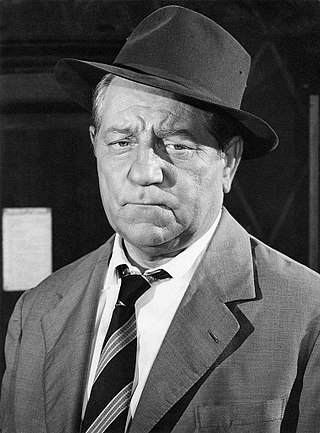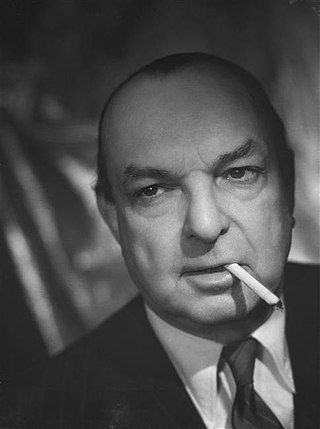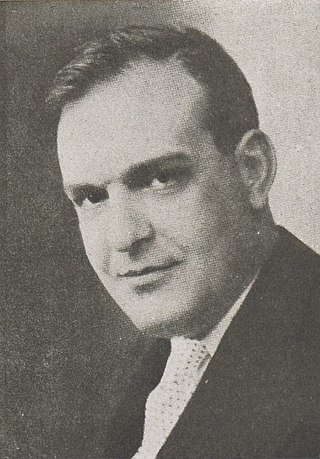
Jean Renoir was a French film director, screenwriter, actor, producer and author. As a film director and actor, he made more than forty films from the silent era to the end of the 1960s. His La Grande Illusion (1937) and The Rules of the Game (1939) are often cited by critics as among the greatest films ever made. He was ranked by the BFI's Sight & Sound poll of critics in 2002 as the fourth greatest director of all time. Among numerous honours accrued during his lifetime, he received a Lifetime Achievement Academy Award in 1975 for his contribution to the motion picture industry. Renoir was the son of the painter Pierre-Auguste Renoir and the uncle of the cinematographer Claude Renoir. He was one of the first filmmakers to be known as an auteur.

Alfred Louis Charles de Musset-Pathay was a French dramatist, poet, and novelist. Along with his poetry, he is known for writing the autobiographical novel La Confession d'un enfant du siècle.

The Rules of the Game is a 1939 French satirical comedy-drama film directed by Jean Renoir. The ensemble cast includes Nora Gregor, Paulette Dubost, Mila Parély, Marcel Dalio, Julien Carette, Roland Toutain, Gaston Modot, Pierre Magnier and Renoir.

Jean Gabin Alexis Moncorgé, known as Jean Gabin, was a French actor and singer. Considered a key figure in French cinema, he starred in several classic films, including Pépé le Moko (1937), La grande illusion (1937), Le Quai des brumes (1938), La bête humaine (1938), Le jour se lève (1939), and Le plaisir (1952). During his career, he twice won the Silver Bear for Best Actor from the Berlin International Film Festival and the Volpi Cup for Best Actor from the Venice Film Festival, respectively. Gabin was made a member of the Légion d'honneur in recognition of the important role he played in French cinema.

Pierre Renoir was a French stage and film actor. He was the son of the impressionist painter Pierre-Auguste Renoir and elder brother of the film director Jean Renoir. He is also noted for being the first actor to play Georges Simenon's character Inspector Jules Maigret in Night at the Crossroads, directed by his brother.
Poetic realism was a film movement in France of the 1930s. More a tendency than a movement, poetic realism is not strongly unified like Soviet montage or French Impressionism but were individuals who created this lyrical style. Its leading filmmakers were Pierre Chenal, Jean Vigo, Julien Duvivier, Marcel Carné, and, perhaps the movement's most significant director, Jean Renoir. Renoir made a wide variety of films some influenced by the leftist Popular Front group and even a lyrical short feature film. Frequent stars of these films were Jean Gabin, Michel Simon, Simone Signoret, and Michèle Morgan.

Jean Baptiste Prosper Bressant was a French actor born in Chalon-sur-Saône, Saône-et-Loire, in 1815. In 1838, he went to the French theatre at St. Petersburg, where for eight years he played important parts with ever-increasing reputation. His success was confirmed at the Gymnase when he returned to Paris in 1846, and he made his debut at the Comédie Française as a full-fledged sociétaire in 1854.

Gaston Baty, whose full name was Jean-Baptiste-Marie-Gaston Baty, was a French playwright and theatre director. He was born in Pélussin, Loire, France.

Michel Simon was a Swiss actor of German origin. He appeared in many notable French films, including La Chienne (1931), Boudu Saved from Drowning (1932), L'Atalante (1934), Port of Shadows (1938), The Head (1959), and The Train (1964).

Paul Misraki was a French composer of popular music and film scores. Over the course of over 60 years, Misraki wrote the music to 130 films, scoring works by directors like Jean Renoir, Claude Chabrol, Jacques Becker, Jean-Pierre Melville, Jean-Luc Godard, Henri-Georges Clouzot, Orson Welles, Luis Buñuel and Roger Vadim.

La Bête Humaine is a 1938 French crime drama film directed by Jean Renoir, with cinematography by Curt Courant. The picture features Jean Gabin and Simone Simon, and is loosely based on the 1890 novel La Bête humaine by Émile Zola.

La Ferté-Saint-Aubin is a commune in the Loiret department in the administrative region of Centre-Val de Loire, France.

Sylvia Bataille was a French actress of Romanian-Jewish descent. When she was twenty, she married the writer Georges Bataille with whom she had a daughter, the psychoanalyst Laurence Bataille (1930–1986). Georges Bataille and Sylvia separated in 1934 but did not divorce until 1946. Starting in 1938, she was a companion of the psychoanalyst Jacques Lacan with whom, in 1941, she had a daughter, Judith. Sylvia Bataille married Jacques Lacan in 1953.

Nana is a 1926 French silent drama film directed by Jean Renoir and starring Catherine Hessling, Werner Krauss and Jean Angelo. It was Renoir's second full-length film and is based on the 1880 novel by Émile Zola.

Charles Spaak was a Belgian screenwriter who was noted particularly for his work in the French cinema during the 1930s. He was the son of the dramatist and poet Paul Spaak, the brother of the politician Paul-Henri Spaak, and the father of the actresses Catherine Spaak and Agnès Spaak.
Les caprices de Marianne is a two-act opéra comique by Henri Sauguet with a French libretto by Jean-Pierre Gredy after Alfred de Musset. It was first performed at the Aix-en-Provence Festival in 1954, with the Orchestre de la Société des Concerts du Conservatoire conducted by Louis de Froment with the Chorale Élisabeth Brasseur.
Ania Guédroïtz, née Princess Agnes Alexeievna Guedroitz on 15 January 1949 in Dublin, Ireland, is a Belgian actress.

Jean-Amédée Lefroid de Méreaux was a French composer, pianist, piano teacher, musicologist and music critic. He is best-known for his 60 Grandes Études, Op. 63.
A list of books and essays by or about Jean Renoir:
Claude Winter was a French stage and film actress.















